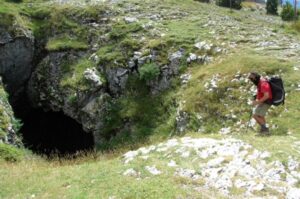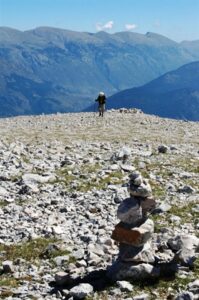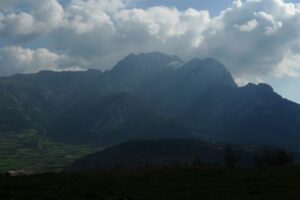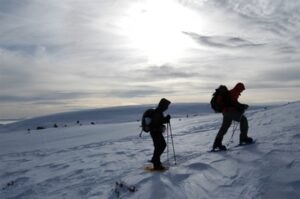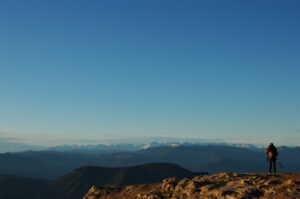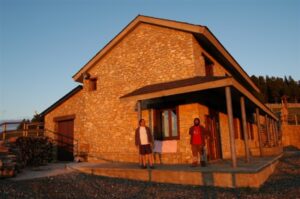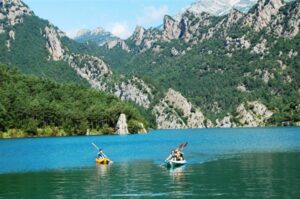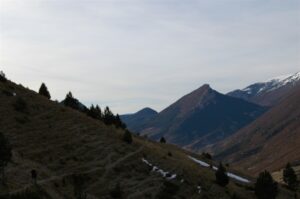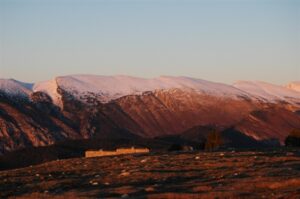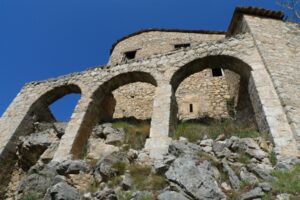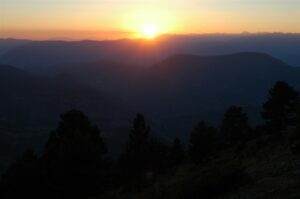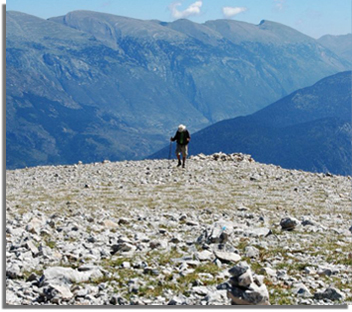
The Caracremada route
The Caracremada (“Burnt Face”) route is a 5-day walking circuit that takes in the main mountains in the Pre-Pyrenees of L’Alt Berguedà and L’Alt Solsonès; it begins and ends at Els Rasos de Peguera.
The route passes the most emblematic mountains of the Catalan Pre-Pyrenees (Rasos de Peguera, Serra d’Ensija, Pedraforca, Serra del Verd, Serra del Port de Comte and Serra del Busa) and various mountain villages, including Gósol and Sant Llorenç de Morunys.
The main characteristics that differentiate this route from others that run through the Pyrenees can be summarised as follows:
- It is the first completely Pre-Pyrenean route and connects the most significant mountains in L’Alt Berguedà and L’Alt Solsonès.
- The variety of scenery, with the corresponding variety of flora and fauna.
- It is crossing that is accessible for most of the year, as it is largely snow-free, even in the depths of winter; spring and autumn are the best months for doing this walk, but the summer heat is also reasonably bearable. The majority of the route runs at altitudes of between 1,700 and 2,200 metres and the lowest part of the route (Serra del Busa) passes through a conifer forest that provides quite a lot of shade and protection from the sun.
- Supplies and accommodation are available in the villages along the route. Their availability is therefore not a conditioning factor, as it is in the case of some high-mountain shelters, which are only open in summer and at weekends.
- Another differential feature of this route relates to the important cultural and historical references associated with it and which also distinguish it from other high-mountain routes. The Caracremada route passes through areas full of history, with: villages, castles, churches, ski slopes, mining centres, thousand-year-old livestock herding routes, museums, Maqui (resistance-fighter) refuges, etc..
In short, for its variety of landscapes, its places of cultural and heritage interest, its proximity to large urban nuclei (Barcelona and its metropolitan area, Terrassa, Sabadell, Manresa, Girona and Vic) and the length of its practicable season, the Caracremada route offers all the characteristics, attractions and factors required to make it a reference point for hiking in Catalonia.
BUT WHO WAS "CARACREMADA"?
Caracremada was the name given to Ramón Vilà, a man from Berguedà, who was born in the village of Peguera. He was considered the last Catalan Maqui (resistance fighter) and fought against Francoism until the end of his days.
Ramon Vila Capdevila (Peguera, Berguedà, 1908 - Castellnou de Bages, 1963), who also went by the nicknames of Cara Cremada (Burnt Face) and Peus Llargs (Long Feet), was an anarcho-syndicalist and member of the CNT >during Spain’s Second Republic. He fought as a member of the French Resistance during the Second World War and as an anti-Francoist guerrilla until his death in 1963. He was the last member of the Maquis to fight against the repression of Francoism. He always demonstrated great bravery and daring and a tremendous knowledge of his geographical environment. This enabled him to enjoy a long life as an outlaw and to commit numerous acts of sabotage against the Francoist regime. He was eventually caught in an ambush at Castellnou de Bages, where he was killed by the bullets of the Guàrdia Civil.
The name Caracremada has been attributed to this route for the following reasons:
- Caracremada knew this area well and using his name in association with the route is a way of associating his character with the mountains that he knew so well and with the recent history of these Pre-Pyrenean territories.
- Caracremada came from a rural family that lived in and around L’Alt Berguedà and L’Alt Solsonès, so both his father’s and his mother’s families had very close relations with the places through which this route runs.
- As he was the last Catalan Maqui and as his life was always associated with the struggle against Nazism and Francoism, Caracremada is a very emblematic personality in this area and is considered a true 20th century bandit.
- As a Maqui who always had to flee from the security forces of the Francoist regime, Caracremada knew these mountains like the back of his hand and knew where the best hiding places and shelters could be found.
